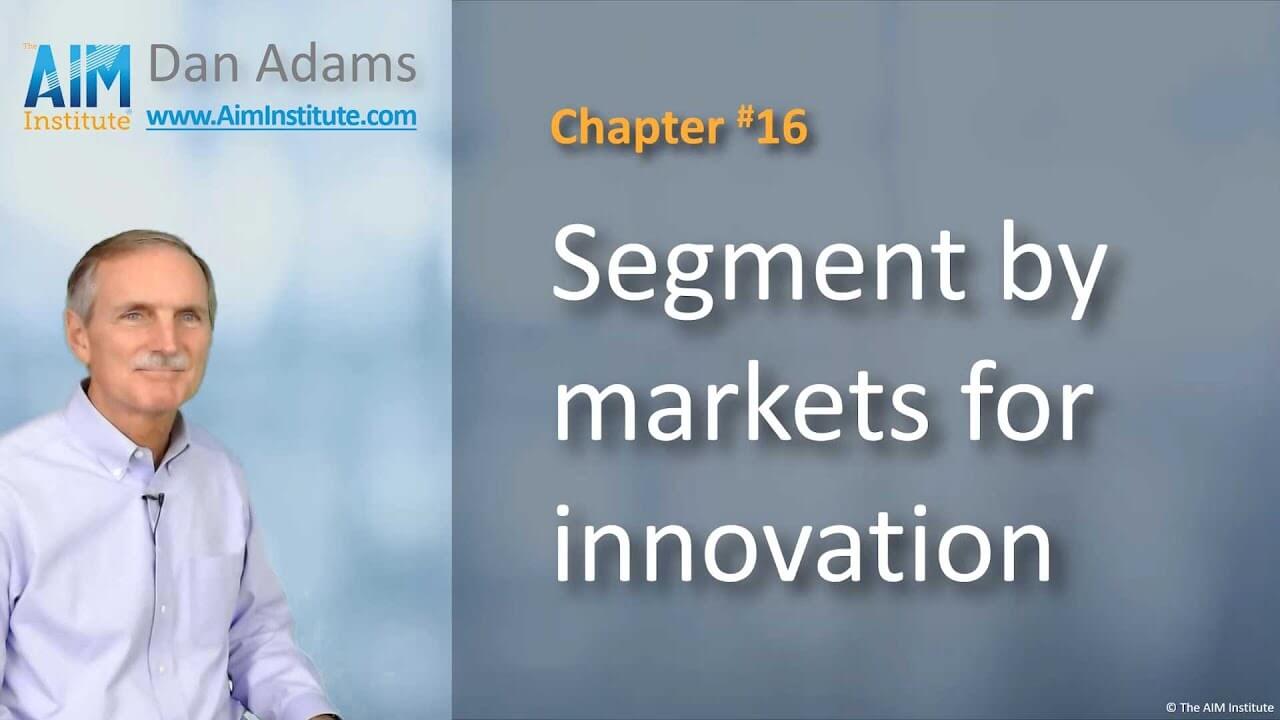B2B Organic Growth Series: Chapter #16
Segment by markets for innovation

Subscribe to the series. Get 50 free videos, sent daily or weekly.
There are many ways to segment customers, but for innovation purposes, segment into “clusters of customers with similar needs.” Do this to maximize your effectiveness and efficiency.
b2bgrowth.video/16 Video length [2:51]
Transcript of Chapter 16
We’ve been saying the key to strong organic growth is innovation. For efficiency, you’d like to innovate for a group of customers. But how do you identify these groups? In other words, how do you segment your customers?
You could segment by geography, company size, their purchase levels, buying behavior, customer needs. But, first… why are you segmenting?
If you’re establishing sales territories, use geography. To plan customer service, use their purchase levels or buying behavior. For innovation, it must be customer needs. After all, the only reason you’re innovating is to meet their needs, right?
Since this video series is focused on innovation, when we say “market segment,” we mean a cluster of customers with similar needs.
Remember, your company’s main job is to understand and meet customers’ needs… better than your competitors. To outpace them, you must do this with greater efficiency… understanding more needs, more deeply, more rapidly… without more resources.
In an inefficient process… you negotiate a contract with this company… make a tech service visit here… have a sales call there… do a satisfaction survey here. Because you gather customer needs using different people at different times in different ways, you are inefficient.
With an efficient approach, you identify a cluster of customers with similar needs so you can innovate around their shared needs. You isolate an attractive market segment and use an interview team to understand needs using the same people in the same timeframe in the same way.
Imagine 2 extreme scenarios: In the first, your company makes only one product for all of your customers. In the opposite, you make a customized product for every single customer.
This maximizes efficiency, but is ineffective… because few customers get what they really want.This maximizes effectiveness, but is inefficient… because you’re designing and producing too many products.
What if you developed products for one market segment at a time? Since they have similar needs, you sacrifice no effectiveness. Everyone gets what they want. And you maintain the highest possible efficiency.
Bottom line? Whenever possible, innovate for market segments. In the next chapter, we’ll move from market segmentation… to market concentration.
Comments